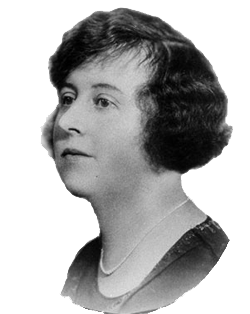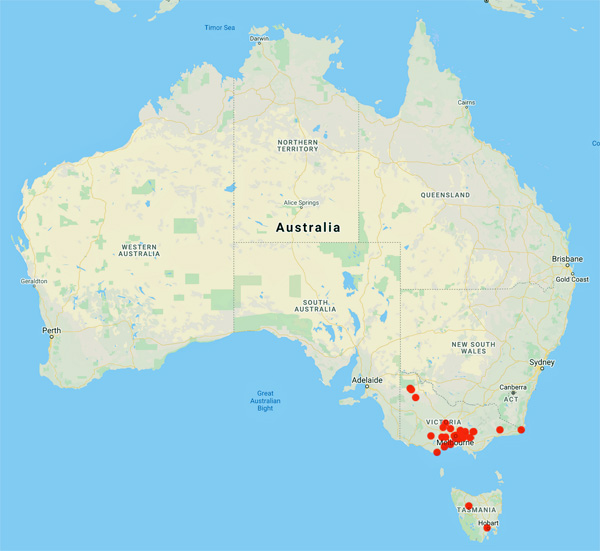
Council of Heads of Australasian Herbaria
Australian National Herbarium
Biographical Notes
 |
Council of Heads of Australasian Herbaria |
 McLennan, Ethel Irene (1891 - 1983)
McLennan, Ethel Irene (1891 - 1983) Born on 15 March 1891 at Williamstown, Victoria. Died 1983 in Melbourne, Victoria
Second child of George McLennan and Eleanor, née Tucker. She lived all her life in Hawthorn where she was educated at Tintern Church of England Girls' Grammar School. After matriculation in 1910, she studied Science at the University of Melbourne, majoring in the Biological Sciences. She was particularly interested in Botany, then taught by Professor A.J. Ewart. In Zoology she was instructed by Professor (later Sir) Baldwin Spencer, a great advocate of clear-cut scientific illustrations.
Ethel was employed by Professor Ewart as a tutor-lecturer in Botany straight after graduation in 1915; she published her first paper in 1916. She had a heavy teaching load in the small department, specialising in plant pathology and mycology. These two subjects were also the main objects of her research and she never veered from her chosen path.
McLennan focused her early interests on the endophytic fungus associated with the seed of the grass Lolium. A detailed, illustrated, scholarly study of this gained her the DSc degree in 1921. With a second publication on the same subject, she successfully entered for the David Syme Research Prize given for the best original research in Science in 1927. She was only the second woman to win the award.
When the first Botany Department (1928) was built for Melbourne University, McLennan helped to plan and furnish the building. The furnishings of the entire Department, made from Tasmanian blackwood (Acacia melanoxylon), reflected her taste and her advocacy of Australian timbers and other raw materials.
Dr McLennan's own research in the 1920s was directed towards economically and agriculturally important plant diseases, finding the pathogens and suggesting treatments. During World War II she was a leading member of a team working on bio-deterioration of optical instruments, particularly those used by the Forces in the Pacific. After successful elucidation of the fungal causes, she devised remedies which were adopted by all Allied units. With the discovery of Penicillin in the 1940s, she turned to searching for Australian antibiotics, particularly in soil fungi. Her published work spans seven decades.
She was strict with her students but her sense of duty, wit and humour endeared her to all of them. She died in Melbourne aged ninety-two.
Source: Extracted from: Dictionary of Australian Artists Online, viewd May 2009, text by Sophie Ducker. Photo: based on image in University of Melbourne.
Data from 111 specimens
